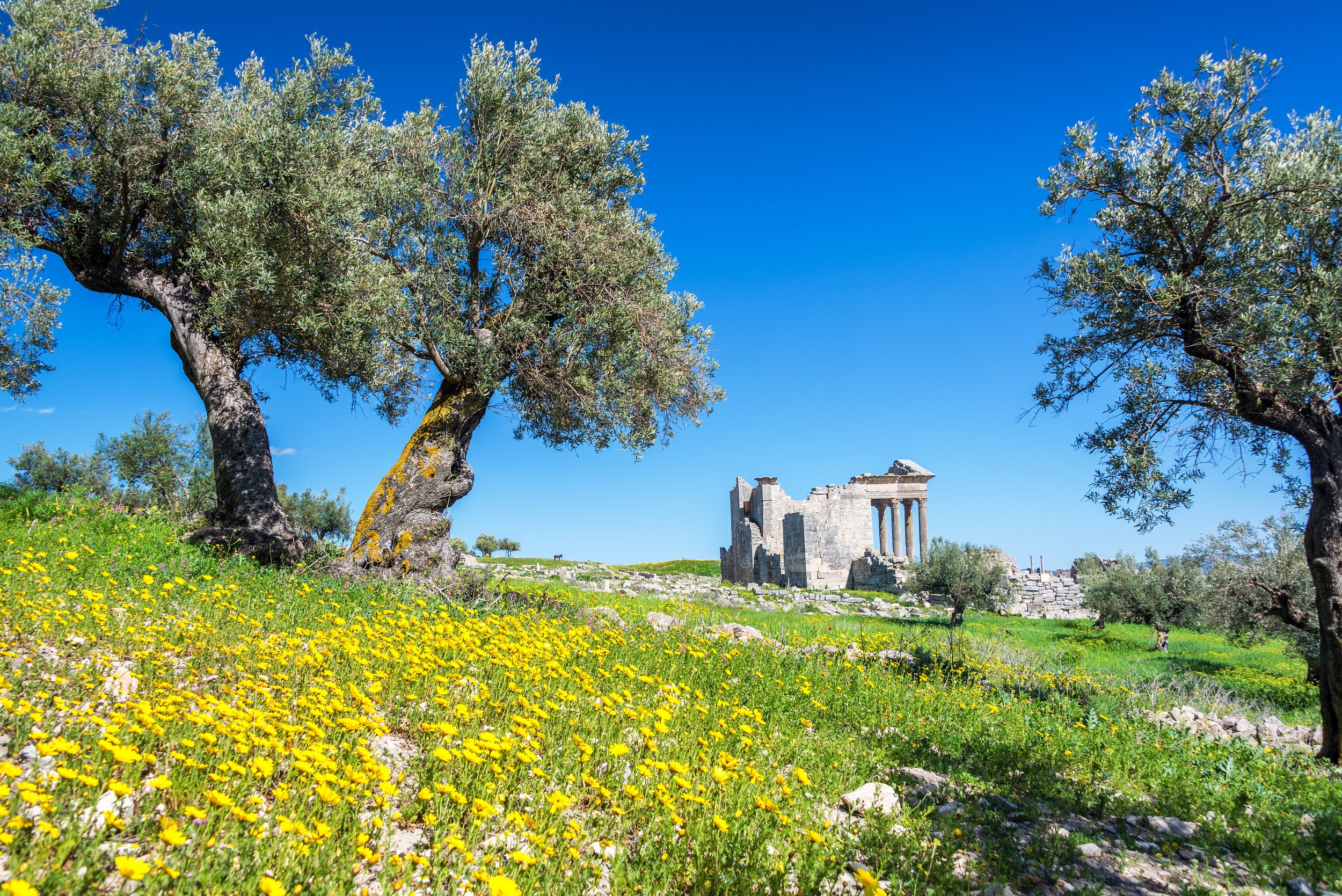
History of the Olive
The olive was native to Asia Minor and spread from Iran, Syria and Palestine to the rest of the Mediterranean basin 6,000 years ago. It is among the oldest known cultivated trees in the world - being grown before the written language was invented. It was being grown on Crete by 3,000 BC and may have been the source of the wealth of the Minoan kingdom. The Phoenicians spread the olive to the Mediterranean shores of Africa and Southern Europe. Olives have been found in Egyptian tombs from 2,000 years BC. The olive culture was spread to the early Greeks then Romans. As the Romans extended their domain they brought the olive with them.
1,400 years ago the Prophet of Islam, Muhammad, advised his followers to apply olive oil to their bodies, and himself used oil on his head. The use of oil is found in many religions and cultures. It has been used during special ceremonies as well as a general health measure. During baptism in the Christian church, holy oil, which is often olive oil, may be used for anointment. At the Christmas mass, olive oil blessed by the bishop, "chrism", is used in the ceremony. Like the grape, the Christian missionaries brought the olive tree with them to California for food but also for ceremonial use. Olive oil was used to anoint the early kings of the Greeks and Jews. The Greeks anointed winning athletes. Olive oil has also been used to anoint the dead in many cultures.
The olive trees on the Mount of Olives in Jerusalem are reputed to be over 2000 years old, still relative newcomers considering the long domestication of the olive. We don't know the exact variety of the trees on the Mount. Man has manipulated the olive tree for so many thousands of years that it is unclear what varieties came from which other varieties. Varieties in one country have been found to be identical to differently named varieties in another. Some research is now being done using gene mapping techniques to figure out the olive family tree. Shrub-like "feral" olives still exist in the Middle East and represent the original stock from which all other olives are descended.
In the past several hundred years the olive has spread to North and South America, Japan, New Zealand and Australia.
THE OLIVE IN CALIFORNIA
As the Franciscans marched north, establishing missions in California, they also planted olive groves. Southern California saw the first olive trees. According to an account in Judith Taylor's book, The Olive in California, a visitor to Mission San Fernando in 1842 saw the mission buildings in ruins but the orchard with a good crop of olives. The visitor remarked that the mission probably had the biggest olive trees in the state. Subsequently in the past 150 years, trees have been planted in several waves along with interest in olives and olive oil. Many of these older groves (80-150 years old) still exist in California. Most are in Northern California. In Southern California population and housing pressure have put the farmers out of business. There are many isolated trees or fragments of old groves but the land is too expensive for olive growing. Income per acre is 10 times lower than other crops like wine grapes and even those can't compete with development potential.
The Mission Olive Preservation, Restoration, and Education Project (MOPREP) aims to preserve the cultural link to the California Mission Olive tree for the purpose of general public education and enjoyment.
MYTHOLOGY
Athens is named for the Goddess Athena who brought the olive to the Greeks as a gift. Zeus had promised to give Attica to the god or goddess who made the most useful invention. Athena's gift of the olive, useful for light, heat, food, medicine and perfume was picked as a more peaceful invention than Poseidon's horse - touted as a rapid and powerful instrument of war. Athena planted the original olive tree on a rocky hill that we know today as the Acropolis. The olive tree that grows there today is said to have come from the roots of the original tree.
